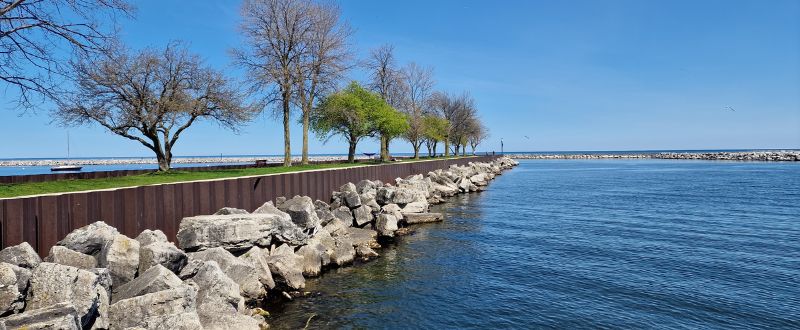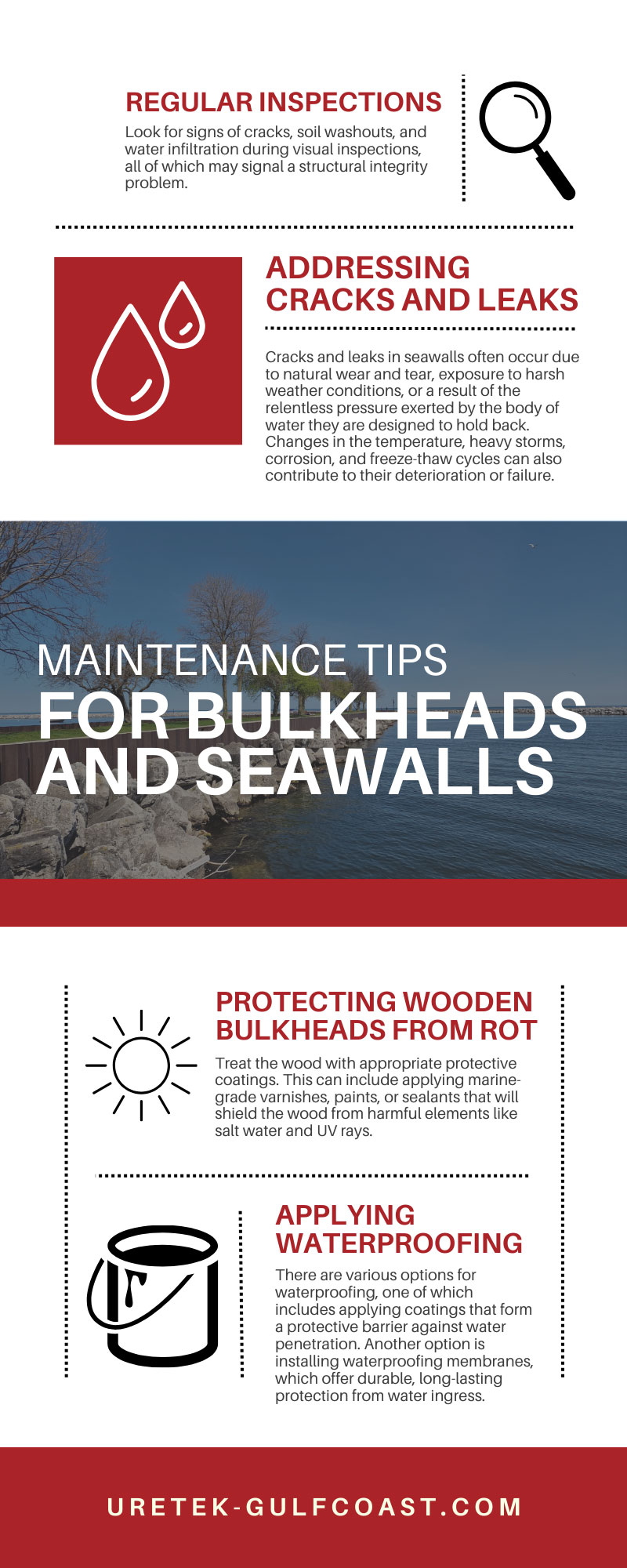Bulkheads and seawalls absorb the impact of waves, reducing their strength and preventing them from washing away valuable soil. Neglecting their upkeep can lead to structural weakening and eventual failure, which may result in severe property damage, landscape degradation, and increased vulnerability to flooding and erosion.
Moreover, the cost of repairing or replacing poorly maintained bulkheads and seawalls can be significantly higher than regular maintenance expenditures. Discover maintenance tips for bulkheads and seawalls that preserve and extend their lifespan.
Comparing Bulkheads and Seawalls
Bulkheads protect land from erosion and wave action by serving as barriers between the water and the land. They prevent soil displacement and maintain the shoreline’s integrity.
On the other hand, seawalls absorb and reflect the force of waves before they reach the shore, reducing coastal erosion and flooding. They safeguard coastal properties and infrastructures from the damaging effects of storm surges and high tides.
In terms of size, bulkheads are typically smaller and used in calmer bodies of water. Seawalls are generally larger and more robust than bulkheads. This is because they primarily protect extensive coastlines from powerful ocean waves and storm surges.
Common Materials Used in Bulkhead and Seawall Construction
There’s a variety of materials used in the construction of bulkheads and seawalls, but one of the most popular choices is concrete. Concrete’s durability and low-maintenance nature make it an ideal choice for many property owners, but even this robust material will eventually need some maintenance.
Another commonly used material is timber, which may require maintenance more frequently than concrete because of its susceptibility to rot and insect damage. Metal, such as steel, is also used in some cases but faces issues like corrosion over time. Each of these materials has unique maintenance needs to ensure their longevity and effectiveness.
Regular Inspections
One of the most important maintenance tips for bulkheads and seawalls is to conduct regular inspections to spot potential problems before they become costly repairs. Look for signs of cracks, soil washouts, and water infiltration during visual inspections, all of which may signal a structural integrity problem.
Early detection can prevent these issues from escalating, saving time and money in the long run. Work with a professional contractor or engineer for annual or biannual inspections so that any necessary maintenance or repairs can be addressed promptly, preventing future complications.
Addressing Cracks and Leaks
Cracks and leaks in seawalls often occur due to natural wear and tear, exposure to harsh weather conditions, or a result of the relentless pressure exerted by the body of water they are designed to hold back. Changes in the temperature, heavy storms, corrosion, and freeze-thaw cycles can also contribute to their deterioration or failure.
These flaws are not just aesthetically displeasing; they also pose a significant safety risk. These fissures can compromise the structural integrity of the seawalls, leading to severe erosion, flooding, and potential property damage.
Protecting Wooden Bulkheads From Rot
A major concern for wooden bulkheads involves the risk of rot from the structure’s constant exposure to water. Ensuring that the wood remains in good condition and well-protected from decay is essential for prolonging its life span.
To keep wooden bulkheads in top shape, it’s important to regularly inspect them for any signs of damage, such as discoloration, signs of rot or decay, termite infestation, or structural instability. Treat the wood with appropriate protective coatings. This can include applying marine-grade varnishes, paints, or sealants that will shield the wood from harmful elements like salt water and UV rays.
Clearing Vegetation and Unclogging Weep Holes
Over time, vegetation can grow in and around the bulkhead or seawall and contribute to its deterioration as roots break through the structure. Regularly clearing off unwanted vegetation and trimming back any encroaching plants is an essential maintenance task.
Additionally, weep holes are vital for allowing water to seep through the seawall, preventing built-up pressure from causing structural failure. It’s important to periodically inspect these openings and make sure they’re not obstructed with debris, including plant matter or sediment, for proper drainage.
Applying Waterproofing
Concrete, metal, and wood in coastal defense structures are exposed to harsh elements, particularly saltwater and UV rays, which can cause deterioration over time. Waterproofing these structures can greatly enhance their resistance to water damage, prolong their lifespan, and improve their effectiveness in protecting waterfront properties.
There are various options for waterproofing, one of which includes applying coatings that form a protective barrier against water penetration. Another option is installing waterproofing membranes, which offer durable, long-lasting protection from water ingress. These methods, along with the use of water-resistant sealants, ensure a high level of protection against the damaging effects of saltwater, leading to enhanced performance and longevity of seawalls.
Water Infiltration and Soil Washout
Water infiltration through joints, cracks, and repeated wave action can lead to soil washouts, which are potentially damaging to your bulkhead or seawall. When the soil is washed out from behind the wall, it creates voids, destabilizing the structure and potentially leading to more cracks and leaks. This is why it’s essential to address water infiltration and soil washout as soon as it becomes apparent.
Expanding polyurethane foam is a versatile solution for addressing water infiltration and soil washout. When injected into the damaged area, the foam rapidly expands, filling up the void and stabilizing the soil. This bulkhead repair method not only rectifies the immediate issue but also reinforces the structure, enhancing its resilience against future damage.
The structural integrity of bulkheads and seawalls is crucial for preserving waterfront property. Early detection of issues through regular inspections, coupled with prompt action on repairs, can save substantial time and money.
The choice of materials, such as concrete, timber, or metal, plays an essential role in their durability and the care they require. Waterproofing, filling cracks and leaks, and addressing water infiltration and soil washout can significantly enhance the lifespan of these coastal defenses.
Trust the experts at URETEK to protect and preserve your seawalls and bulkheads from erosion and flooding. From regular maintenance to damage repairs, our professional services ensure these structures remain robust and effective. Contact us today for a consultation.


